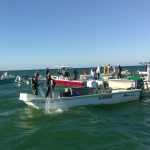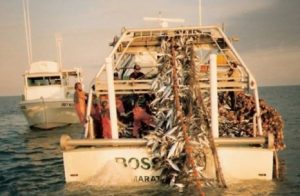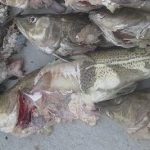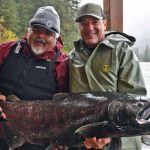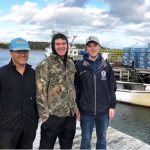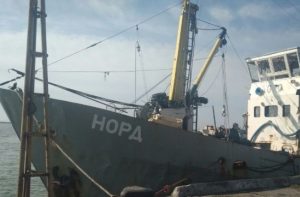Tag Archives: DFO scientists

Northern Shrimp fishing: DFO proposals do not pass muster in the industry
Northern shrimp fishermen from Quebec and the Atlantic wholeheartedly reject the new precautionary approach presented by Fisheries and Oceans Canada (DFO) scientists to protect stocks. The fishing associations of Quebec, New Brunswick and Newfoundland and Labrador, industrialists and DFO scientists were gathered during two days for the advisory committee which ended Wednesday in Quebec. Northern shrimp stocks in the Estuary and Gulf of St. Lawrence are not likely to improve, according to Fisheries and Oceans Canada. >>click to read<< 11:47
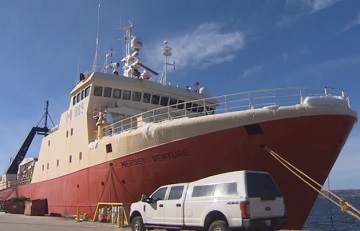
Ottawa signs new deal to charter fishing boats for science surveys
The agreement with the Atlantic Groundfish Council, which represents the region’s largest seafood companies, allows DFO to charter industry vessels for two to six weeks a year for fisheries or ecosystem surveys in Atlantic Canada. “We’ve been distressed in the fishing industry for two or three years now because DFO research vessel surveys were not getting done,’ said Bruce Chapman, president of the Atlantic Groundfish Council. DFO scientists returned last week from the first mission under the new charter agreement. It was a two-week survey on Georges Bank aboard the Mersey Venture, a 58-metre factory freezer trawler owned by Nova Scotia seafood company Mersey Seafoods. The Mersey Venture gathered data used by both Canada and the United States to jointly manage trans-boundary haddock, cod and yellowtail flounder stocks on the shared fishing grounds. Photos, >click to read< 17:35

Where Did All the Mackerel Go?
Summer in Atlantic Canada can be unreliable, emerging reluctantly from the damp cold of spring. But a sure sign of its arrival is the sudden presence of Atlantic Mackerel, Slipping away is already something of a mackerel specialty as they dart from their winter habitat, in the deep water along the continental shelf stretching from Nova Scotia to North Carolina, to their inshore summer spawning grounds. For the so-called northern contingent, from which the Canadian catch is derived, these spawning grounds are in the Gulf of Saint Lawrence; for their southern counterparts, summer is spent on the mid-Atlantic coast up to the Gulf of Maine. >click to read< 09:55
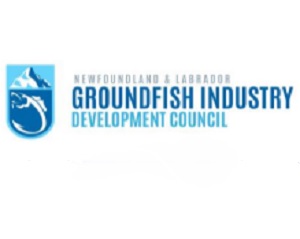
NLGIDC provides commentary on the latest scientific assessment for 3Ps Cod
The stock is currently at a low level and growth of this important resource is being impeded by high natural mortality. Jim Baird, The Chairman of the NLGIDC said, “The level of natural mortality has been at the highest levels ever recorded for this stock in the most recent time period.” Baird continued, “Having a better understanding of the processes related to natural mortality is important to provide scientists the ability to make accurate projections related to stock growth.” It is clear that seals eat substantial quantities of cod and many industry representatives believe that seal consumption is likely contributing to this high natural mortality, however DFO scientists are not convinced this is the case. >click to read< 19:56

FISH-NL calls for resurrection of arm’s-length body to bridge massive divide between science and inshore harvesters
The Federation of Independent Sea Harvesters of Newfoundland and Labrador (FISH-NL) is calling on Ottawa to resurrect the Fisheries Resource Conservation Council (FRCC) to bridge the enormous divide between fishermen and scientists over the state of fish stocks — northern cod in particular. “DFO scientists and inshore harvesters are once again complete strangers, just like in the early 1990s when the commercial fisheries failed,” says Ryan Cleary, President of FISH-NL. >click to read<13:38
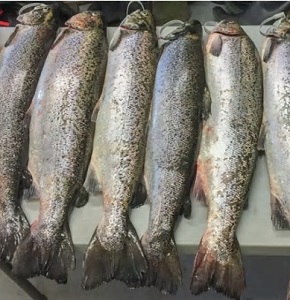
New proof that fish farm escapees interbreed with wild salmon: DFO
For as long as there have been fish farms in this province, there have been fish escaping from cages into the wild. Conservationists have suspected those escapees breed with native fish, changing their DNA. Now they say they have proof. One of the largest escapes in Newfoundland happened in 2013, when more than 20,000 salmon got away from a farm in Hermitage Bay. That incident inspired DFO scientists to study the genetic material of fish in salmon rivers on the island’s south coast. “We looked at 19 rivers in the first year and hybrids were detected in 18 of those rivers,” said lead researcher, biologist Brendan Wringe. >click to read<10:27

DFO scientists clarify the decline of cod
In a province where the fishery is foundational to its survival, the decline in cod stocks has many worried and searching for clear answers. This announcement was a particular shock as the same assessment in 2016 predicted a considerable increase in cod numbers for this year. But scientists and harvesters who had noted the declines in the cod’s food source, and the many starving fish of last year’s cod fishery, were not as surprised. Research scientist with the department of Fisheries and Oceans Dr. Mariano Koen-Alonso says the sudden and sharp decline in cod stock is something being seen across the ecosystem. >click to read<11:30
Formal DFO plan for 2016 shrimp season may take until June
 It will be several weeks before the Department of Fisheries and Oceans (DFO) is able to offer a formal plan for shrimp quotas for the 2016 season. Meanwhile, trawlers that are fishing in the area off southern Labrador will continue to fish until March 31, which is the end of their current season. Earlier this week the Fish Food and Allied Workers (FFAW) called for an immediate cessation of fishing in the area, after they learned that preliminary estimates from DFO scientists showed a decline of about 40 percent of the shrimp biomass in that area. However, that’s not likely to happen. Read the rest here 09:30
It will be several weeks before the Department of Fisheries and Oceans (DFO) is able to offer a formal plan for shrimp quotas for the 2016 season. Meanwhile, trawlers that are fishing in the area off southern Labrador will continue to fish until March 31, which is the end of their current season. Earlier this week the Fish Food and Allied Workers (FFAW) called for an immediate cessation of fishing in the area, after they learned that preliminary estimates from DFO scientists showed a decline of about 40 percent of the shrimp biomass in that area. However, that’s not likely to happen. Read the rest here 09:30

































